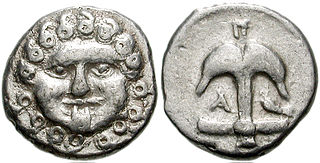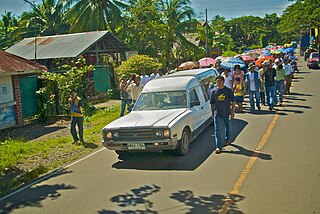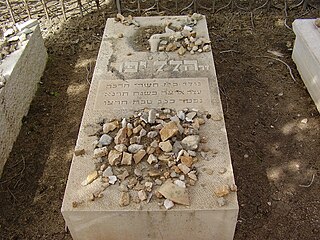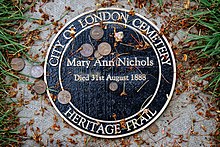
A funeral is a ceremony connected with the final disposition of a corpse, such as a burial or cremation, with the attendant observances. Funerary customs comprise the complex of beliefs and practices used by a culture to remember and respect the dead, from interment, to various monuments, prayers, and rituals undertaken in their honour. Customs vary between cultures and religious groups. Funerals have both normative and legal components. Common secular motivations for funerals include mourning the deceased, celebrating their life, and offering support and sympathy to the bereaved; additionally, funerals may have religious aspects that are intended to help the soul of the deceased reach the afterlife, resurrection or reincarnation.

The veneration of the dead, including one's ancestors, is based on love and respect for the deceased. In some cultures, it is related to beliefs that the dead have a continued existence, and may possess the ability to influence the fortune of the living. Some groups venerate their direct, familial ancestors. Certain religious groups, in particular the Eastern Orthodox Churches and the Catholic Church, venerate saints as intercessors with God; the latter also believes in prayer for departed souls in Purgatory. Other religious groups, however, consider veneration of the dead to be idolatry and a sin.

The Day of the Dead is a holiday traditionally celebrated on November 1 and 2, though other days, such as October 31 or November 6, may be included depending on the locality. It is widely observed in Mexico, where it largely developed, and is also observed in other places, especially by people of Mexican heritage. The observance falls during the Christian period of Allhallowtide. Some argue that there are Indigenous Mexican or ancient Aztec influences that account for the custom, and it has become a way to remember those forebears of Mexican culture. The Day of the Dead is largely seen as having a festive characteristic. The multi-day holiday involves family and friends gathering to pay respects and to remember friends and family members who have died. These celebrations can take a humorous tone, as celebrants remember funny events and anecdotes about the departed.

A cemetery, burial ground, gravesite, graveyard, or a green space called a memorial park, is a place where the remains of dead people are buried or otherwise interred. The word cemetery implies that the land is specifically designated as a burial ground and originally applied to the Roman catacombs. The term graveyard is often used interchangeably with cemetery, but a graveyard primarily refers to a burial ground within a churchyard.

The Acheron is a river located in the Epirus region of northwest Greece. It is 52 km (32 mi) long, and its drainage area is 705 km2 (272 sq mi). Its source is near the village Zotiko, in the southwestern part of the Ioannina regional unit, and it flows into the Ionian Sea in Ammoudia, near Parga.

In Greek mythology, Charon or Kharon is a psychopomp, the ferryman of the Greek underworld, also known as Hades. He carries the souls of those who have been given funeral rites across the rivers Acheron and Styx, which separate the worlds of the living and the dead. Archaeology confirms that, in some burials, low-value coins were placed in, on, or near the mouth of the deceased, or next to the cremation urn containing their ashes. This has been taken to confirm that at least some aspects of Charon's mytheme are reflected in some Greek and Roman funeral practices, or else the coins function as a viaticum for the soul's journey. In Virgil's epic poem, Aeneid, the dead who could not pay the fee, and those who had received no funeral rites, had to wander the near shores of the Styx for one hundred years before they were allowed to cross the river. Charon also ferried the living mortals Heracles and Aeneas to the underworld and back again.

Burial, also known as interment or inhumation, is a method of final disposition whereby a dead body is placed into the ground, sometimes with objects. This is usually accomplished by excavating a pit or trench, placing the deceased and objects in it, and covering it over. A funeral is a ceremony that accompanies the final disposition. Evidence suggests that some archaic and early modern humans buried their dead. Burial is often seen as indicating respect for the dead. It has been used to prevent the odor of decay, to give family members closure and prevent them from witnessing the decomposition of their loved ones, and in many cultures it has been seen as a necessary step for the deceased to enter the afterlife or to give back to the cycle of life.

A headstone, tombstone, or gravestone is a stele or marker, usually stone, that is placed over a grave. It is traditional for burials in the Christian, Jewish, and Muslim religions, among others. In most cases, it has the deceased's name, date of birth, and date of death inscribed on it, along with a personal message, or prayer, but may contain pieces of funerary art, especially details in stone relief. In many parts of Europe, insetting a photograph of the deceased in a frame is very common.

An unmarked grave is one that lacks a marker, headstone, or nameplate indicating that a body is buried there. However, in cultures that mark burial sites, the phrase unmarked grave has taken on a metaphorical meaning.
Bereavement in Judaism is a combination of minhag (traditions) and mitzvah (commandments) derived from the Torah and Judaism's classical rabbinic literature. The details of observance and practice vary according to each Jewish community.

In death customs, a viewing is the time that family and friends come to see the deceased before the funeral, once the body has been prepared by a funeral home. It is generally recommended that a body first be embalmed to create the best possible presentation of the deceased. A viewing may take place at the funeral parlor, in a family home or at a place of worship, such as a church. Some cultures, such as the Māori of New Zealand, often take the body to the marae or tribal community hall.

In Greek mythology, the Greek underworld, or Hades, is a distinct realm where an individual goes after death. The earliest idea of afterlife in Greek myth is that, at the moment of death, an individual's essence (psyche) is separated from the corpse and transported to the underworld. In early mythology the dead were indiscriminately grouped together and led a shadowy post-existence; however, in later mythology elements of post-mortem judgment began to emerge with good and bad people being separated.

The danake or danace was a small silver coin of the Persian Empire, equivalent to the Greek obol and circulated among the eastern Greeks. Later it was used by the Greeks in other metals. The 2nd-century AD grammarian Julius Pollux gives the name as danikê or danakê or danikon and says that it was a Persian coin, but by Pollux's time this was an anachronism.

Charon's obol is an allusive term for the coin placed in or on the mouth of a dead person before burial. Greek and Latin literary sources specify the coin as an obol, and explain it as a payment or bribe for Charon, the ferryman who conveyed souls across the river that divided the world of the living from the world of the dead. Archaeological examples of these coins, of various denominations in practice, have been called "the most famous grave goods from antiquity."

Mast stepping is the process of raising the mast of a boat. It may be a ceremonial occasion on a new boat, a necessary step, or simply routine.

During the Pre-Hispanic period the early Filipinos believed in a concept of life after death. This belief, which stemmed from indigenous ancestral veneration and was strengthened by strong family and community relations within tribes, prompted the Filipinos to create burial customs to honor the dead through prayers and rituals. Due to different cultures from various regions of the Philippines, many different burial practices have emerged. For example, the Manobos buried their dead in trees, the Ifugaos seated the corpse on a chari before it was brought to a cave and buried elsewhere. The most common forms of traditional burials are supine pits, earthenware jars, and log coffins, and have been a topic of interest among Philippine archaeologists since the early 20th century.

Ancient Greek funerary practices are attested widely in literature, the archaeological record, and in ancient Greek art. Finds associated with burials are an important source for ancient Greek culture, though Greek funerals are not as well documented as those of the ancient Romans.

The act of placing visitation stones is significant in Jewish bereavement practices. Small stones are placed by people who visit Jewish graves in an act of remembrance or respect for the deceased. The practice is a way of participating in the mitzvah of burial. It is customary to place the stone with the left hand.

Desecration of graves involves intentional acts of vandalism, theft or destruction in places where humans are interred: this includes body snatching. It has long been considered taboo to desecrate or otherwise violate graves or grave markers of the deceased, and in modern times it has been prohibited by law. Desecration is defined as violating something that is sacred.



















